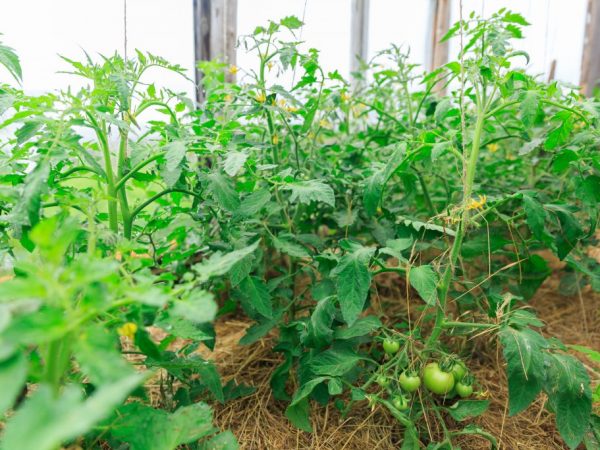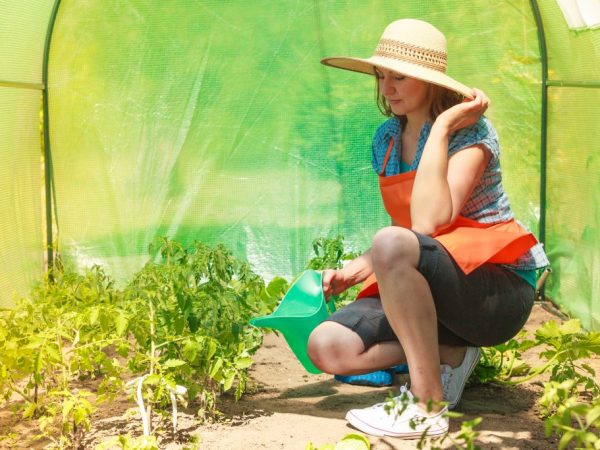Types of feeding tomatoes with folk remedies
Fertilizing tomatoes with folk remedies is an integral part of planting care for those who want to grow an environmentally friendly crop.

Types of feeding tomatoes with folk remedies
To grow good tomatoes, you need to know how and how to fertilize young plants, as well as what to do with them during flowering and ovary formation. Folk remedies have been tested by many gardeners, which only proves their effectiveness.
Benefits
Despite the huge range of fertilizers in the agricultural sector, not all of them are of high quality and safe. Often, manufacturers hide the real composition of the chemicals, thereby endangering not only the land, but also the people who will eat vegetables grown on this site.
Now more and more summer residents are switching to folk food for tomatoes and other crops. Such products do not carry a negative impact and, with reasonable use, do not accumulate in the fruits of tomatoes.
In order for the plant to be able to grow and develop normally, it must be fed in a timely manner. This is especially important during the period of fruit formation and ripening.
How to fertilize tomatoes
You can feed tomatoes with proven folk remedies according to various schemes, but the principle of three stages proved to be the best. The first time the bushes are fertilized 2-2.5 weeks after transplanting seedlings into open ground. By this time, the root system is strong and branched enough to be able to get nutrients from the soil. Potassium is important for tomatoes at this stage of growth.
When the plant throws out the first brush for flowering and tiny buds appear on it, the second stage is carried out. Top dressing of tomatoes is carried out with phosphorus, calcium and magnesium.
Flowering and fruit set is a crucial stage in the growing season of tomatoes. It is their condition and the abundance of nutrients that affect the future harvest.
Fertilizer in the open field
If the crop is grown outdoors, nutrients from the soil are not only used by other plants, but also washed out by precipitation. This negatively affects the growing season, as a result, the plant gives poor yields or does not bear fruit at all.
It is recommended to distribute the fertilization stages:
- After a time after transplanting young bushes, they are fed with a special herb infusion. This fertilizer is made from any weed growing on the site or nearby. The only important point is the absence of seeds on them. The material is recommended to be collected before flowering. Tomatoes are fertilized with a mixture of 10 liters of water and 0.5 liters of herbal infusion. The resulting mixture is poured under the root at the rate of 1 liter per 1 bush.
- During budding, wood ash is added. First, the ground is thoroughly watered so that it is wet. Then you can either sprinkle the beds with ashes right away, or add water to it and water the tomatoes with the finished mixture. To prepare the ash, you need to burn clean wood without varnish, paint or traces of rubber.
- When the bushes bloom and form an ovary, they are watered with infusion of mullein or bird droppings. Cow manure is soaked for 5-6 days, and chicken manure is soaked for 10 or more. As soon as the fermentation process subsides, the infusion is diluted with water at the rate of 1:10 and watered with tomato bushes. This must be done carefully so as not to get on the leaves and shoots of the plant: this will burn them.
During flowering, foliar fertilization is recommended if there are few flowers. To do this, dilute 1 drop of iodine and 2 tbsp. l. milk whey.
It is recommended to spray the leaves and shoots in the afternoon when the heat subsides. This recipe promotes intensive bud formation and a more harmonious flowering of the culture. Sometimes a little honey is added to the mixture to attract pollinators, but this must be done carefully so as not to provoke an invasion of ants on the site.
Fertilizer in the greenhouse

Processing will help to avoid the formation of barren flowers
To get a good harvest, the tomato planting site is changed from time to time. Compliance with the rules of crop rotation prevents the depletion of the land. In a greenhouse, this is unrealistic.
Greenhouse plants are fed for the first time even before planting. In autumn, when digging, it is advisable to add rotted humus to the ground in an amount of 2 kg per 1 m². Such methods of preparing the beds make up for the missing amount of organic matter in the soil after the previous harvest.
Further, the recipes and fertilization schemes for tomatoes are no different from those used for ground vegetables. In the greenhouse, during the period of a sharp increase in temperature, many barren flowers are sometimes formed. To avoid this, during flowering, the bushes are treated with the following mixture:
- 3 drops of iodine;
- 1 liter of water;
- 3 tbsp. l. milk whey;
- 1 tsp hydrogen peroxide.
The green part of the plant is sprayed with this solution. This amount is usually enough for 30-40 bushes.
Other recipes
In addition to the main dressing, tomatoes are watered with various decoctions and infusions throughout the growing season.
For 3 liters, take 4 peels from a banana. It is crushed with a knife and infused for 5 days at room temperature. Then another 7 liters of water are added to the infusion, after which they are watered with tomato beds.
Onion and garlic skins are soaked in a deep container. After 2-3 days, when the liquid acquires a dark color, it is diluted with water in a 1: 1 ratio and the plants are watered. In addition to feeding, this infusion repels pests and fights well with aphids during foliar processing.
The bushes are sprayed with ammonia diluted with water in a 1: 3 ratio. It promotes good growth of green mass during the growth of the bush. This is necessary for normal photosynthesis.
Top dressing of seedlings
Productivity directly depends on the quality of tomato seedlings. If it is strong and healthy, the bushes are subsequently capable of producing a large number of ovaries. Seedlings grown in poor soil, poor in mineral and organic matter, will grow frail and painful.
There are effective ways to feed seedlings using folk methods. Recipes depend on the state of the bushes:
- If the leaves curl and wither, they lack copper. To solve the problem, pieces of copper wire are stuck into the pots with seedlings and the ground is poured abundantly with water.
- The leaf turns yellow from the base, but it does it unevenly - watering the seedlings with manganese is required. The lack of this trace element is compensated by a light pink solution. It is also an excellent method of preventing late blight and other fungal diseases.
- If the leaves on the back take on a lilac hue, this is a sure sign of a lack of phosphorus. A small amount of meat and bone or fish meal is added to the soil.
These simple methods of feeding plants with folk remedies make it possible to grow healthy seedlings. If the soil is poor, it is better not to use it for growing young plants, otherwise you will have to apply chemical fertilizers.
Conclusion
Caring for and controlling the growth of the culture improves the result.The main feature of folk fertilizers is their availability. They also do not pollute the environment. The resulting crop can be eaten without fear of getting nitrate poisoning.


